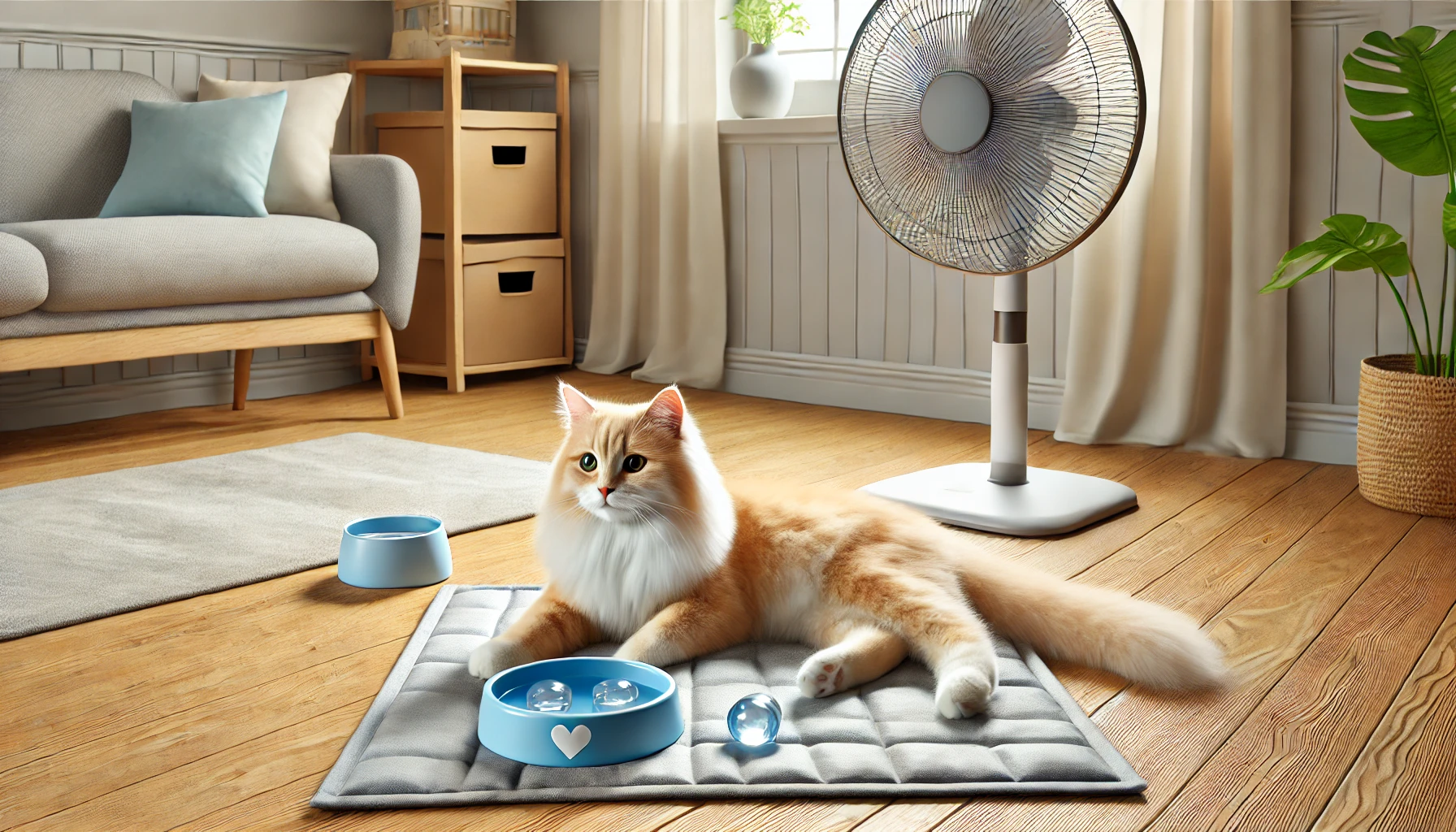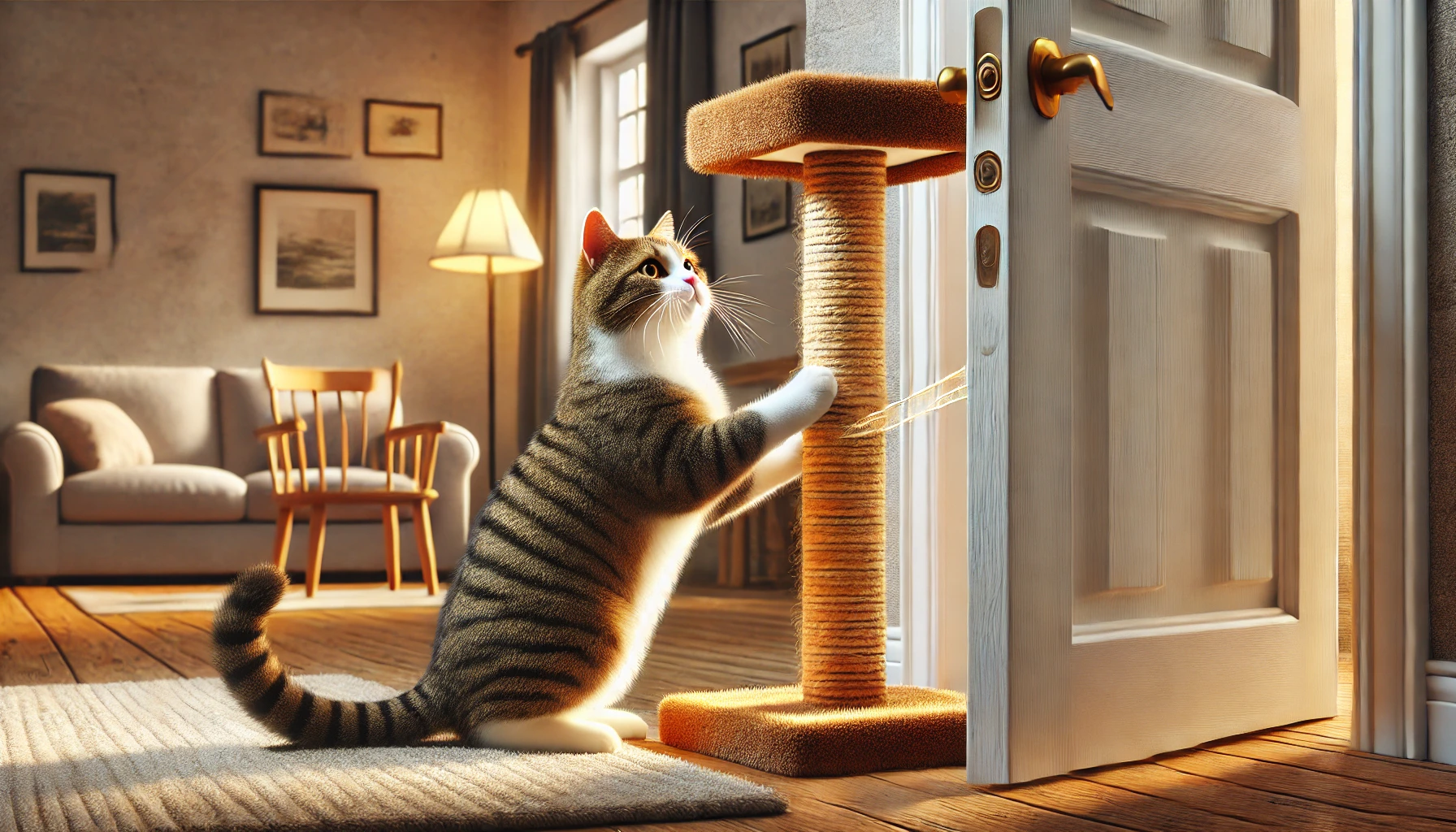Scratching is a natural and necessary behavior for cats—it helps them stretch, mark territory, and maintain claw health. However, when your cat starts shredding your couch or scratching wooden furniture, it can become frustrating.
The good news is that you can redirect this behavior without punishment. In this guide, you’ll learn why cats scratch, how to train them to use scratching posts, and the best ways to protect your furniture.
1. Understand Why Cats Scratch
Before stopping unwanted scratching, it’s important to understand why cats do it.
✅ Reasons Cats Scratch:
✔ To maintain claw health – Scratching removes dead layers of claws.
✔ To mark territory – Their paws release scent to claim space.
✔ To stretch muscles – It’s a full-body stretch for flexibility.
✔ To relieve stress or boredom – Scratching can be soothing.
🚨 Common Mistake: Thinking your cat scratches just to be destructive.
Instead: Recognize that scratching is a natural and necessary behavior.
2. Provide the Right Scratching Post
If your cat is scratching furniture, it likely means they don’t have a better alternative.
✅ How to Choose the Best Scratching Post:
✔ Tall and sturdy – At least 32 inches so your cat can stretch fully.
✔ Covered in rough material – Sisal fabric, wood, or cardboard works best.
✔ Stable base – Wobbly posts discourage use.
✔ Horizontal and vertical options – Cats have preferences, so provide both.
🚨 Common Mistake: Buying a small, unstable post.
Instead: Invest in a large, durable scratching post your cat will actually use.
3. Place Scratching Posts Strategically
Where you put the scratching post matters! If it’s in the wrong place, your cat won’t use it.
✅ Best Places to Put Scratching Posts:
✔ Near the furniture they currently scratch.
✔ Close to sleeping areas, since cats stretch after naps.
✔ In high-traffic areas, not hidden in a corner.
🚨 Common Mistake: Hiding the scratching post in an unused room.
Instead: Place it where your cat actually spends time.
4. Make Furniture Less Appealing to Scratch
To stop unwanted scratching, your furniture must become less attractive than the scratching post.
✅ Ways to Deter Your Cat from Furniture:
✔ Double-sided tape – Cats dislike sticky surfaces.
✔ Aluminum foil – The texture discourages scratching.
✔ Citrus spray – Cats dislike the scent (test a small area first).
✔ Furniture covers – Protect while training.
🚨 Common Mistake: Only using deterrents without providing an alternative.
Instead: Use deterrents alongside a better scratching option.
5. Reward Your Cat for Using the Scratching Post
Cats learn best through positive reinforcement.
✅ How to Encourage Good Scratching Habits:
✔ Rub catnip or silvervine on the scratching post.
✔ Give treats or praise when your cat uses it.
✔ Play with a wand toy near the post to create interest.
🚨 Common Mistake: Punishing the cat for scratching furniture.
Instead: Redirect them to the scratching post and reward them.
6. Trim Your Cat’s Claws Regularly
Keeping your cat’s nails trimmed reduces the damage they can cause.
✅ How to Trim Your Cat’s Claws:
✔ Use cat nail clippers (not human clippers).
✔ Gently press the paw pad to extend the claw.
✔ Trim the sharp tip, avoiding the quick (pink area).
✔ Reward with treats and praise.
🚨 If your cat hates nail trimming, try doing one or two claws at a time and build up gradually.
7. Consider Soft Nail Caps for Extra Protection
If scratching remains a problem, soft nail caps (like Soft Paws) can help.
✅ What Are Nail Caps?
✔ Soft plastic covers glued to the claws.
✔ Prevent damage to furniture while allowing natural scratching.
✔ Last 4–6 weeks before falling off naturally.
🚨 Common Mistake: Assuming nail caps are uncomfortable.
Instead: Most cats adjust quickly, and they are vet-approved.
8. Never Declaw Your Cat (It’s Inhumane!)
Declawing is not a solution—it’s a painful, unnecessary amputation.
🚨 Declawing Can Cause:
❌ Chronic pain and arthritis.
❌ Behavioral problems (biting, avoiding the litter box).
❌ Inability to defend themselves.
Instead of declawing, focus on training, scratching posts, and nail trims.
9. Provide Plenty of Play and Enrichment
Sometimes, cats scratch furniture out of boredom or excess energy.
✅ Ways to Keep Your Cat Entertained:
✔ Daily interactive play sessions (wand toys, laser pointers).
✔ Rotate different toys to keep things exciting.
✔ Provide climbing spaces (cat trees, shelves).
🚨 Common Mistake: Assuming scratching is only a “bad habit.”
Instead: Understand that active, stimulated cats scratch less destructively.
10. Be Patient and Consistent
Training a cat takes time—be patient and stay consistent with redirection and rewards.
✅ Key Steps to Stop Furniture Scratching:
✔ Provide an irresistible scratching post.
✔ Place it near scratched furniture.
✔ Use deterrents on furniture.
✔ Reward your cat for using the post.
✔ Trim nails and consider soft caps if needed.
🚨 Common Mistake: Giving up too soon.
Instead: It may take a few weeks, but with persistence, your cat will learn.
Final Thoughts
Scratching is normal cat behavior, but you can redirect it without punishing your cat. By providing the right scratching surfaces, rewarding good habits, and using gentle deterrents, you can protect your furniture while keeping your cat happy.
🐱 Key Takeaways:
✅ Scratching is natural—redirect, don’t punish.
✅ Choose a tall, sturdy scratching post with sisal fabric.
✅ Place the post near scratched furniture.
✅ Use double-sided tape or citrus spray as deterrents.
✅ Reward your cat for using the post.
✅ Trim nails regularly and consider soft nail caps.
✅ Keep your cat active to prevent boredom scratching.
With the right approach, your cat will happily use their scratching post instead of your couch! 🐾💖




